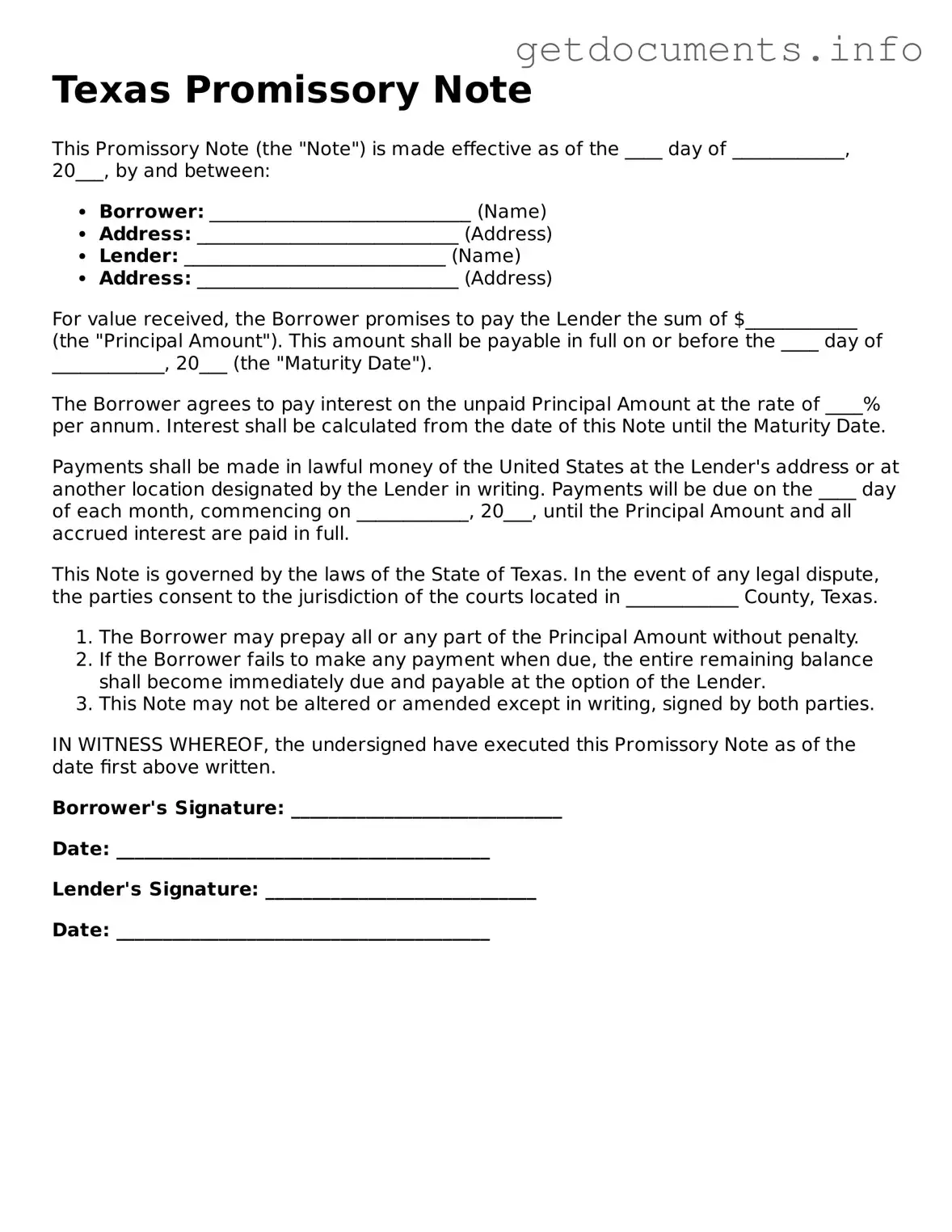Free Promissory Note Template for Texas
A Texas Promissory Note is a written promise to pay a specific amount of money to a designated party at a defined time. This document outlines the terms of the loan, including interest rates and payment schedules, ensuring clarity for both the borrower and lender. To get started on your own Promissory Note, click the button below.
Access Promissory Note Editor
